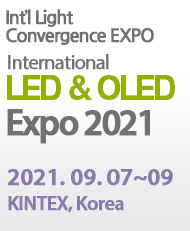
The LuxLink RC technology allows for commissioning and control of luminaires with a smartphone or tablet along with autonomous adaptive controls based on occupancy and ambient light sensors.
Luxonic leveraged the LuxLive event to launch its first wireless adaptive control platform for lighting, stressing ease of both installing and commissioning fixtures that integrate the LuxLink RC (remote control) technology. Also at the UK exhibition, the company announced a number of new LED-based luminaires including the elegant and decorative Skylux pendant and the Hi-Max luminaire for industrial applications.

With the LuxLink technology, Luxonic will target a number of applications where dimming and on/off controls can deliver significant energy savings. Lighting controls manager John Webb specifically mentioned warehouse applications as a target and said that the company already has customers in that sector.
Indeed, warehouses have been an apt target for controllable solid-state lighting (SSL) because workers are frequently absent from many areas of a warehouse, allowing the lighting to be dimmed to a low level or powered off until workers are present. Digital Lumens has installed many such systems in the US using the same wireless technology that underlies the ZigBee standard, yet with proprietary added features.
Webb said that Luxonic decided to use a technology other than ZigBee to both minimize customer cost and also optimize the use of the network capacity in terms of traffic. He said ZigBee networks can suffer from messages being repeated in the mesh and that the network is not ideal for node-to-node communications. The LuxLink RC systems use a proprietary wireless link in the 868-MHz band developed by LiteIP Ltd. LiteIP supplies RF modules that include the network link and the aforementioned occupancy and light sensors.
The demonstration at LuxLive showed the benefits of luminaire-to-luminaire communications. The system allows luminaires in, say, a warehouse to be combined into groups. Moreover, any luminaire can be in multiple groups. For example, you can use a tablet to set the network to link all individual luminaires to the eight neighboring luminaires in a matrix. In that manner, when a luminaire on the edge of a group detects occupancy, it can message other luminaires in the group to power on the lights with the adaptive controls. Indeed, the virtual grouping allows the system to essentially sense the direction of travel.
Customers will be able to use the LuxLink technology to commission fixtures which can then act autonomously based on internal sensors and established rules, The network does not require a central controller.
New SSL products
In the lighting product area, meanwhile, the Luxonic Skylux fixtures offer striking looks along with energy efficiency (see photo above). The planar design presents a disc of light with LEDs installed in the center of the disc, edge-lighting a light guide/optic. The product targets applications such as office interiors. Such planar products have also been offered by companies such as Cooper Lighting and GE Lighting.

The Hi-Max high-bay fixture (shown here) is a linear LED lighting design than can deliver 130 lm/W. The company offers the product over the range of 8000 to 34,000 lm, and the fixtures are rated for 100,000 hours of life. The product can also be deployed with the new wireless adaptive control system.
<Source: http://www.ledexpo.com>






















